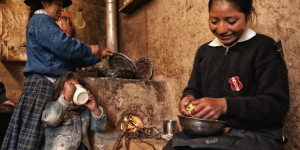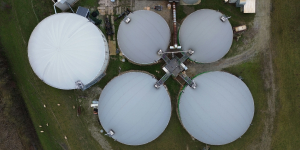Cookstove Projects and Their Contribution to the SDGs
Cookstove Projects and the Sustainable Development Goals: Empowering Communities and Protecting the Planet
The significance of cookstove projects lies not only in their capacity to combat climate change, but how they help to support local livelihoods by improving how ⅓ of the world cooks. The Sustainable Development Goals (SDGs), adopted by the United Nations in 2015, encompass a broad spectrum of social, economic, and environmental objectives aimed at achieving a sustainable and equitable future for all. Check out our article for more information on the future of cookstove projects.
Cookstove projects align with several of these goals, including; SDG 1: No Poverty, SDG 2: Zero Hunger, SDG 3: Good Health and Well-Being, SDG 5: Gender Equality, SDG 7: Affordable and Clean Energy, SDG 8: Decent Work and Economic Growth, SDG 13: Climate Action, and SDG 15: Life on Land.
For more information on the various types of carbon avoidance credits, please read our article.
SDGs Linked to Environmental Benefits
The use of improved cookstoves, with better combustion and fuel efficiency than traditional and inefficient stoves, helps reduce firewood consumption in households, which subsequently puts less pressure on local forest resources, helping to preserve biodiversity. Overtime, this pressure reduction on forest harvesting leads to a higher level of biomass and diverse species in the forests.
Forests are able to regenerate as their ecosystems are less disturbed. This switch in firewood consumption helps contribute to SDG 15 (“protect, restore and promote sustainable use of terrestrial ecosystems, sustainably manage forest resources, combat desertification and reverse and halt land degradation and halt biodiversity loss”).
Improved and clean cookstove solutions reduce fuel use by 30-60% resulting in fewer toxic emissions. For example, ¼ of the world’s black carbon emissions (the sooty black material that is emitted from sources that burn fossil fuel such as coal-first power plants, cool powered stoves, and diesel engines, to name a few), come from the burning of solid fuels targeted for household energy needs. Improved cookstoves result in lower GHG emissions, particularly CO2 and black carbon emissions, and subsequently emissions caused by deforestation in relation to wood harvesting. This helps contribute to SDG 13 (“Take urgent action to combat climate change and its impacts”).
For more information on household communities and biogas in the VCM, please read our article.

SDGS Linked to Socio-Economic Benefits
As these cookstoves reduce the quantity of firewood needed, they directly save households time and money. With improved and clean cookstoves reducing the quantity of firewood, time spent on wood collection and cooking (done by mostly women and children) is also reduced, giving them time to carry out other extracurricular activities or income-generating activities. Globally, over 90% of the work to collect fuel and cook is done by women. In fact, women can spend up to 10 hours per week on this fuel collection and up to four hours per day cooking. By providing women and children with opportunities to engage in both productive and educational activities, all while limiting their exhaustion, enhances their economic empowerment and quality of life.
This connects both SDG 1 (“end extreme poverty in all forms by 2030”), SDG 2 (“end hunger, achieve food security and improved nutrition and promote sustainable agriculture”) and SDG 5 (“achieve gender equality and empower all women and girls”).
Often, cookstove projects promote job creation within the local community by hiring community members to distribute and educate others on the stove’s operations and its benefits. They are also trained on: the reparation, maintenance and construction of the stoves, sales, business development, and programme management, leading to a sense of ownership in the process. With fuel efficient cookstoves, these projects help target SDG 7 (“ensure access to affordable, reliable, sustainable and modern energy for all”) and SDG 8 (“promote sustained, inclusive and sustainable economic growth, full and productive employment and decent work for all”).
SDGs Linked to Health Benefits
It is estimated that each year 3.2 million people die prematurely due to household air pollution. Improved and clean cooking solutions mean less smoke inhalation and a reduction in exposure to harmful pollutants, therefore reducing the occurrence of respiratory and eye diseases, above all for women and children. By channeling the smoke away from the stove’s user, and better containing it, cookstove projects help contribute to SDG 3 (“ensure healthy lives and promote well-being for all at all ages”). With better resource efficiency and containment of the fire, these improved and clean cooking projects further reduce the risk of fire injury and household fires.
Examples of a Cookstove Success Story
Cookstove projects can directly impact local communities and their surrounding environment due to its direct involvement in the member’s homes. Projects that ClimateSeed works with are no exception to this. One project example that targets SDGs 1, 3, 8 and 13 is the Gyapa™ project in Ghana.
The project, developed by Relief International, is one of the largest and longest running cookstove projects in the world. The project involves the manufacture and sale of improved efficient charcoal stoves, branded as Gyapa™ (which means “good fire”) to replace inefficient baseline stoves. In Ghana, about 73% of households rely on solid fuels for cooking, and millions still use an inefficient stove with multiple health hazards for the cook and their family.

The Gyapa™ fuel efficient stove is offered at an affordable price (under US$10) and saves a household half its cash cooking fuel costs (about $120 a year) while providing a safer, efficient, and more convenient cooking experience. The stove was developed with local Ghanaian cooks and artisans using recycled materials and now supports over 700 jobs for women and men in Ghana. The goal is to keep the stove affordable for low income consumers and empower them to switch to an improved stove when they choose.
The stoves provide a superior cooking experience, are affordable, and maintain a consistent fuel efficiency performance throughout their lifespan. The Gyapa™ project has abated over 6 million tons of CO2 equivalent greenhouse gases entering the environment due to large-scale adoption of the fuel efficient and cleaner Gyapa™ stove by Ghanaian households. With over 2.6 million stoves sold to low-income households the strategy works.
If you're interested in contributing to this project or learning more about the large variety of our other cookstoves projects, in Africa, South America, and Asia, feel free to contact us. By purchasing the carbon credits produced by these projects, you're enhancing the livelihoods of communities, supporting biodiversity conservation, and promoting gender equality.
For more information on why avoidance credits are not inherently inferior to removal ones, please read our article.
Sources:
- SNRD Africa
- Calyx Global
- MECS
- WHO International
- Global Goals
- Clean Cooking
- Clean Cooking - Content
- IEA
Common Q&As
Projects in the voluntary carbon market that generate emission avoidance credits do so by achieving reductions through energy efficiency, replacing fossil fuels with renewable energy, and avoiding degradation and destruction of natural carbon sinks by perceiving natural ecosystems.
We group these projects as follows; Agricultural Forestry and Other Land Use, Renewable Energy, Household and Community Devices, Waste Management, and Transportation.
For more information, read our article: What are Carbon Avoidance Credits? Types and Benefits Explained.
One of the primary social benefits of biogas systems is the improvement in household air quality. Traditional cooking methods, such as burning wood or charcoal, generate harmful smoke and indoor air pollution.
For more information, please read our article: Biogas & Household Communities in the VCM: Reducing Emissions & Empowering Communities.
Cookstove projects achieve emissions reductions by working towards two main issues: black carbon emissions and deforestation emissions.
For more information, read our article: Cookstoves Projects: Giving an Access to Clean Cooking.
Share this
You May Also Like
These Related Stories

Giving an Access to Clean Cooking in Cookstoves Projects

Why Avoidance Credits are not Inherently Inferior to Removal Ones


